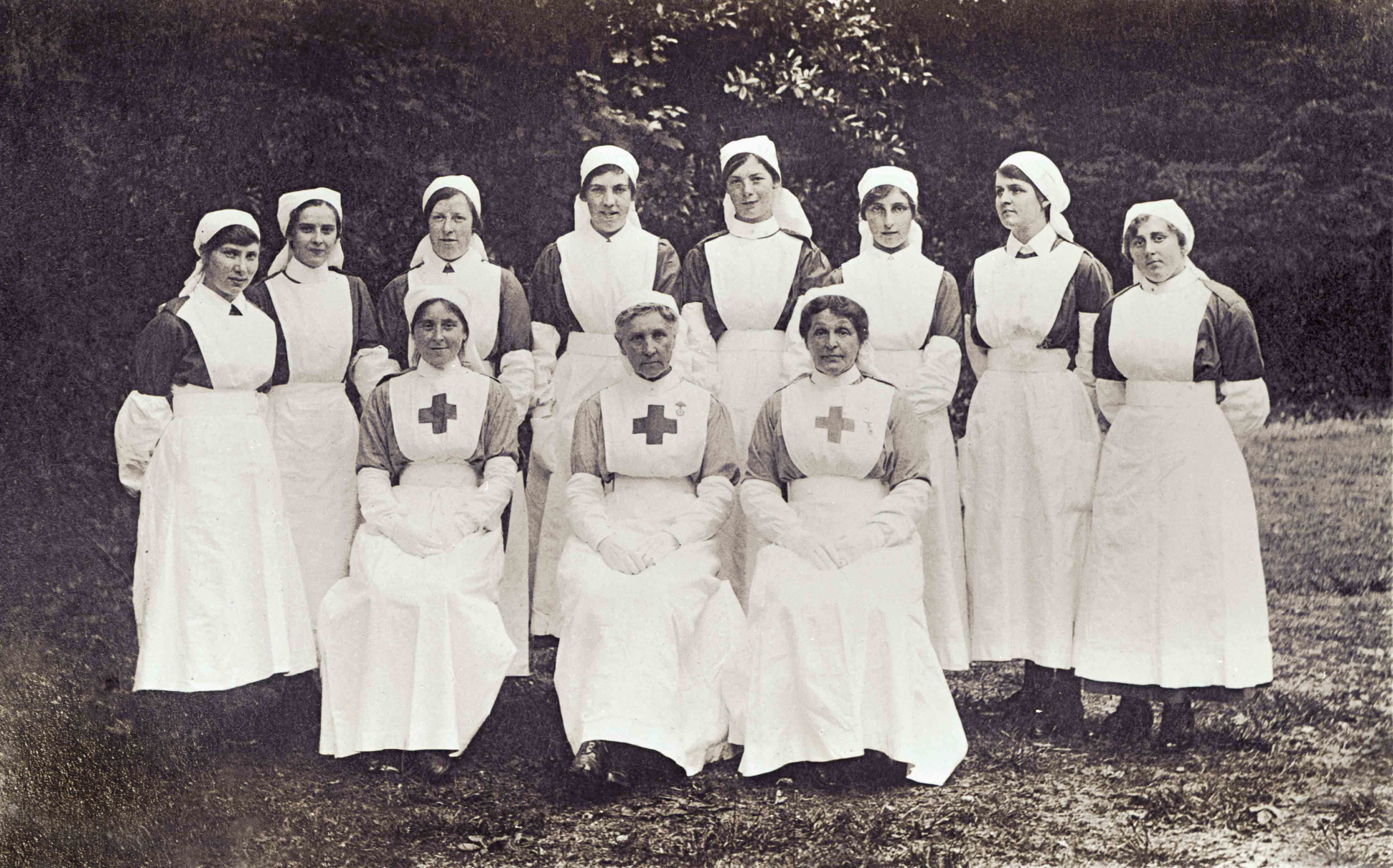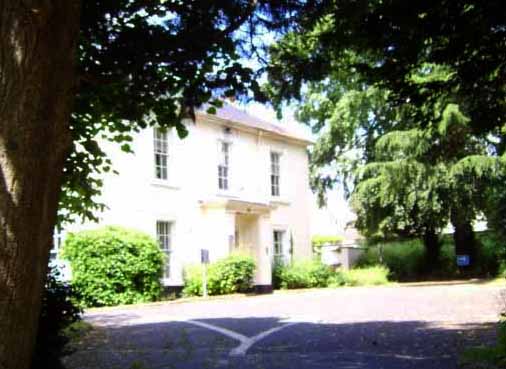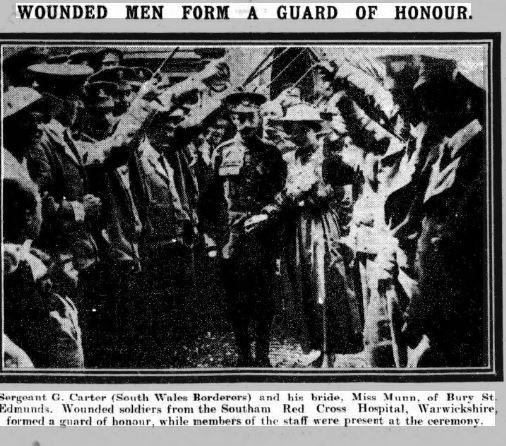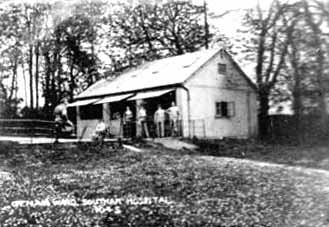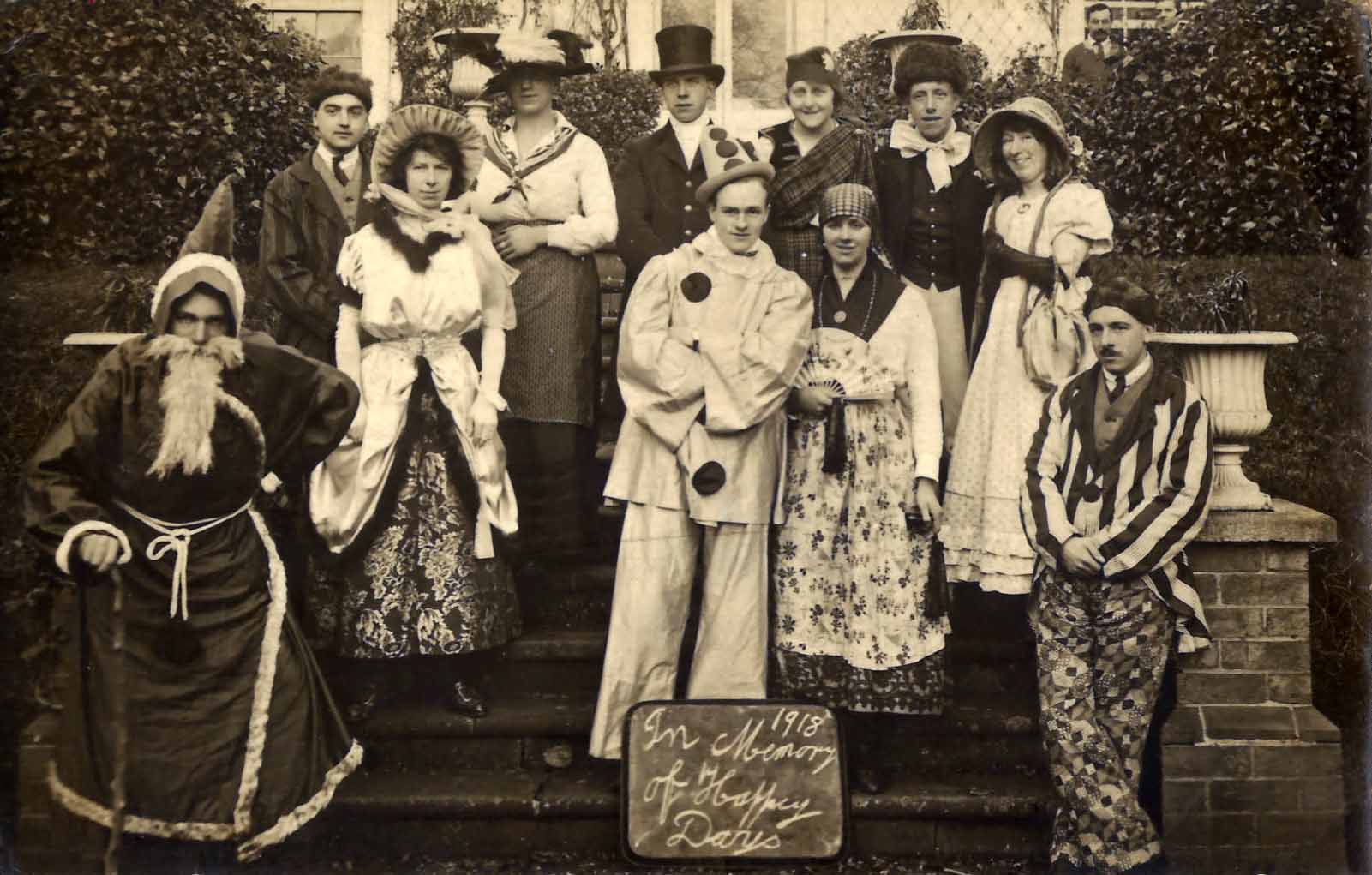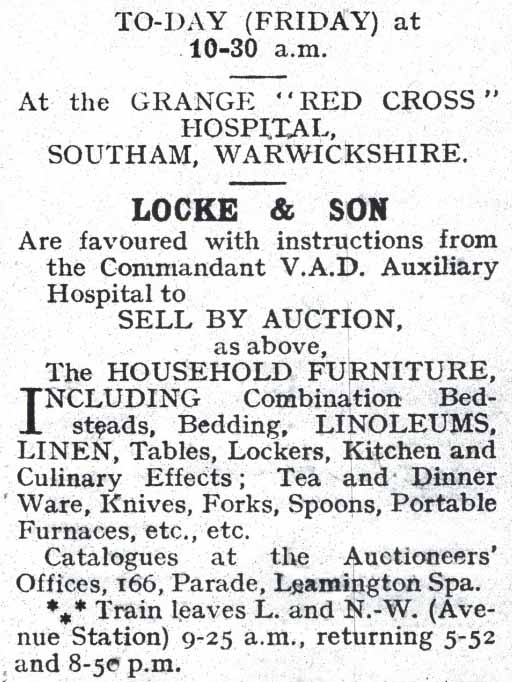
Southam VAD Hospital
Back row the young VADs: Mary Grant, Lillian Plummer, Annie Louise Grant, Olive Fell, Beatie Langton, Nancy Alsop, Dolly Bond Seated the more experienced VADs: Mrs Helen Stephens, Mrs Selina Oldham, Mrs Moyna Gosden
Southam Red Cross Hospital at the Grange (sometimes called the Springs) was one of 3,244 auxiliary hospitals in Britain created by voluntary effort, to treat the wounded of WWI. There were more than forty hospitals in Warwickshire some springing into action as soon as war broke out. The Leamington Courier regularly reported on the hospital so this brief history has emerged largely from their reports.
In Southam plans were first heard in a public meeting in November 1916. County-wide nearly 5,000 wounded men were accommodated but more beds were needed after the terrible toll taken by the battles on the Somme in 1916.
A report of the meeting presided over by G.F.S. Shuckborough stated £300 was needed for the lease of the Grange and additional regular income of about £14.00 (per week?).
The Grange was an elegant small mansion on the edge of the town formerly the home of Captain Locock who relinquished the lease in 1899 when he returned to the navy. Now surrounded by modern housing, then it stood in grounds with an orchard and garden at the edge of the town surrounded by fields. The people of Southam and surrounding villages raised money and on 7th April 1917 the hospital opened with Mrs (later Lady) Shuckborough as Commandant. By 4th May when the Red Cross County president visited there were already 46 patients. She gave packets of cigarettes to them all. Everyone did their bit including Mrs Chamberlayne at Stoneythorpe who gave 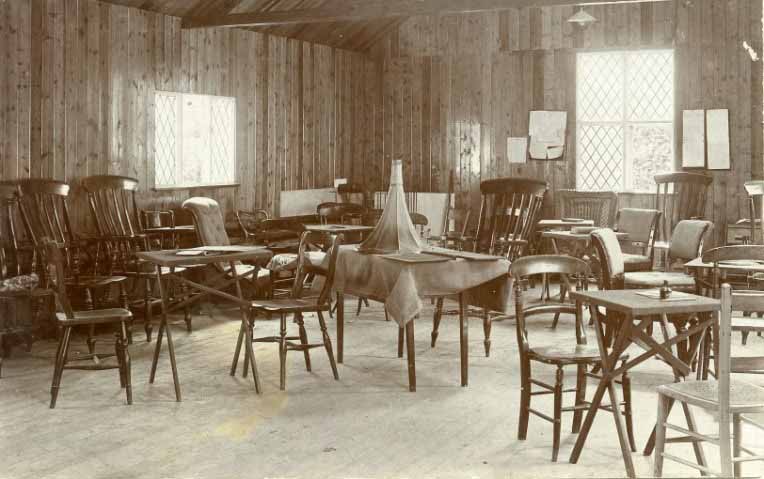
The hospital was soon working to its full capacity and Dr Ormerod trained more VADs during the Autumn of 1917. Winter fundraising provided cash for a recreational room – a large wooden building with comfortable chairs, tables for writing home and a gramophone for amusement.
The principle task of the hospital was rehabilitation in order to return the men to the front as soon as possible. Their mental wellbeing was of great concern to the commandant who encouraged visiting concert parties to perform. Equally the men entertained the nurses and local people; here the men rehearse a play – a comedy with two villains in the dock, a judge with a cotton wool wig and a ‘fair injured maiden’ on the right. 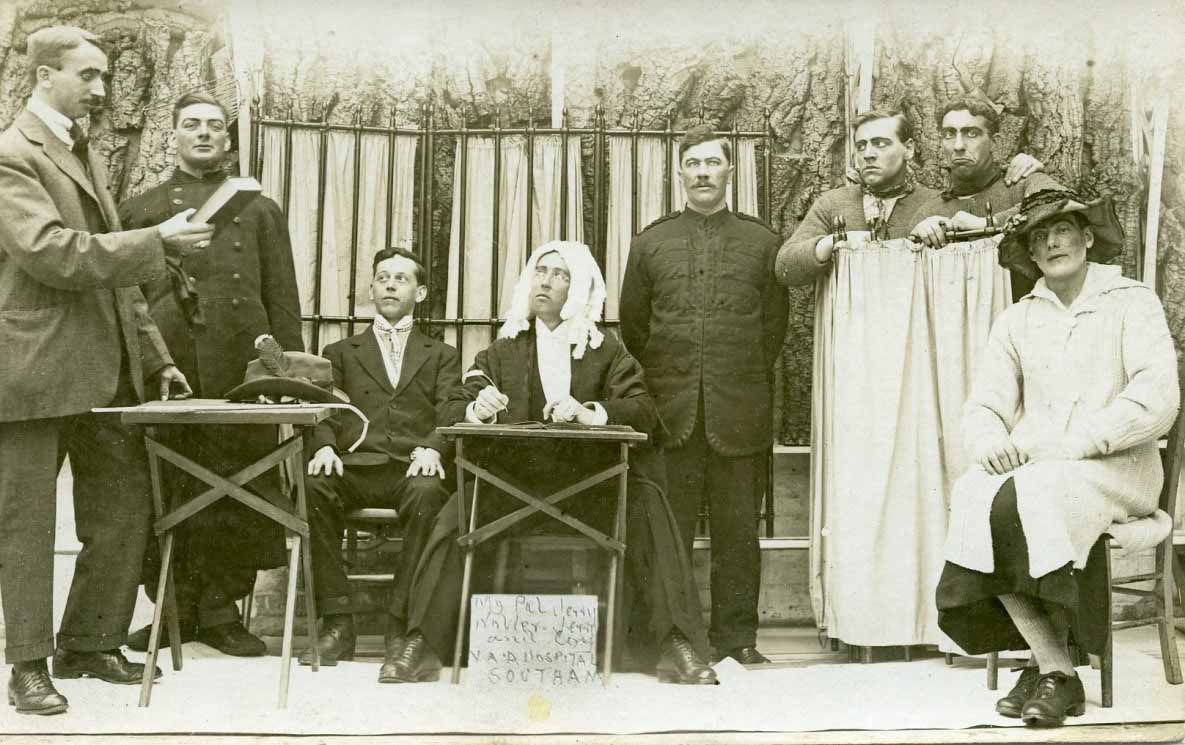
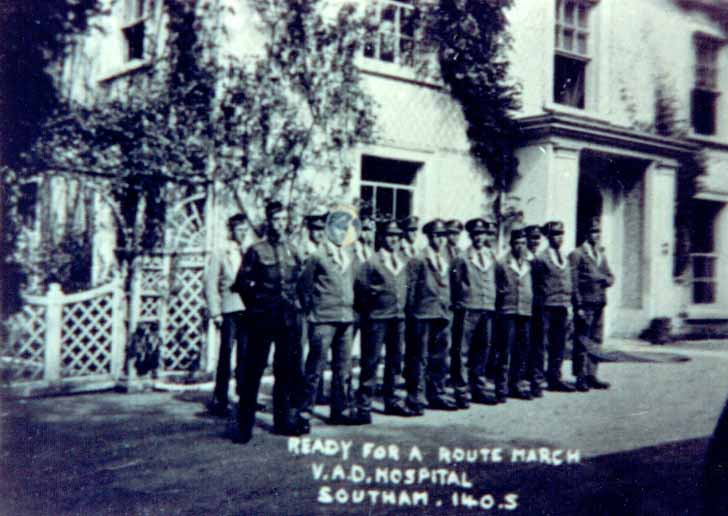
Forming a guard of honour was something that a later set of men did when VAD Daisy Chamberlayne married Dr Johnson RAMC in September of the same year.
There was an occasion for volunteers, scouts, VADs and patients to gather in the church for the day of prayer and thanksgiving on 6th January 1918. With still more fighting to come in the year ahead, the County Annual Red Cross meeting in April talked of urgent staff shortages as 150 Warwickshire VAD nurses, including Daisy Chamberlayne from Southam, had gone to France.
There was no water available at the hospital – not even a well or pump – until finally a water diviner found a supply in the grounds. Previously water had been carried by VADs and patients from the pump on Welsh Road. It was an onerous task to carry, in all weathers, water to provide for all the physical needs of the hospital patients and staff, and that needed for cooking, washing and cleaning.
Many of the men were the ‘walking wounded’, that is those suffering from the severe effects of gas inhalation and others who were in what today would be classed as in a state of trauma – physically, mentally and emotionally unable to coordinate their thinking and actions after exposure to extreme gunfire and the horror of the bestiality of the battle fields of industrial warfare. All the ‘walking wounded’ together with the ‘cot’ cases it was believed needed fresh air. Hospital windows in all wards were flung wide and the outdoor ward (see below) had open sides that were kept open all day, and night, and in all weathers.
There remained a chronic need for nursing as the flu pandemic hit civilians, medical staff and soldiers alike. Despite numerous deaths in the town the hospital fund-raising continued. Whilst the hospital closed officially on 14th April 1919 it remained open until the end of that month. It is not recorded if there was a closing ceremony. When the Leamington VAD hospital ‘The Warren’ closed, their ‘Laying up of flags’ included a church service and a special dinner followed by a procession through the streets to the station accompanied by a band, with the men, by then back in khaki led by the Commandant and accompanied by the nurses whose hankies were waved as the train left.
This fancy dress picture – patients, VADs and professional nurses all taking parts in a Pierrot Troupe – was taken in Autumn 1918. It appears to epitomise the strength and goodwill of an establishment working and relaxing together. Their play was dedicated to the ‘Memory of Happy Days’.
At Southam more than 1,000 patients had passed through the hospital. There were no deaths, and no crime and no incidents of falling out. Lady Shuckbrough ran a tight ship, devoting herself ‘heart and soul’ as Leamington Courier reported, to her ‘men in blue’.
Some of the final work for staff and the volunteers must have been the preparation for the disposal of the furniture and fittings. In June 1919 the Commandant instructed Auctioneers Locke and Son as this advertisement from Leamington Morning News 13 June 1919 shows.
This final photograph is perhaps the most complete portrait of what the Grange at Southam afforded to injured soldiers. It shows the dining room (the conservatory extreme left), the windows flung wide and the steps leading to the extensive garden. The men sit at the window as they enjoy a peaceful, calm environment. One soldier wrote home saying ‘can you imagine a more beautiful place’.


